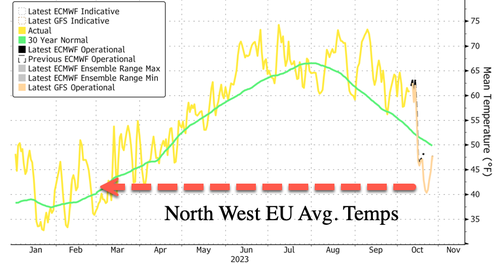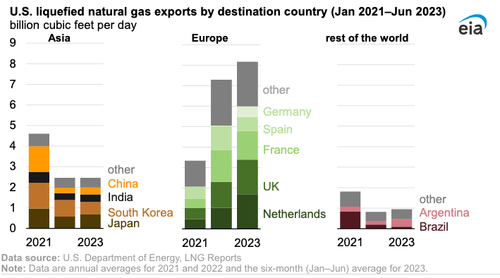from ZeroHedge:
 Update (1042ET):
Update (1042ET):
Months after famed journalist and Pulitzer Prize winner Seymour Hersh revealed the US blew up the Russia-to-Germany natural gas pipeline in the Baltic Sea in September 2022 during a covert operation under the guise of the BALTOPS 22 NATO exercise, yet another undersea gas pipeline, this time, connecting Finland and Estonia has allegedly come under attack.
TRUTH LIVES on at https://sgtreport.tv/
Gasgrid Finland and Elering, the Finnish and Estonian gas system operators, detected an “unusual” leak in the 77-kilometer (48-mile) interconnector in the early morning hours on Sunday.
“Based on observations, it was suspected that the offshore pipeline between Finland and Estonia was leaking,” Gasgrid Finland said in a statement. “The valves in the offshore pipeline are now closed and the leak is thus stopped.”
ERR News reported that the Estonian Navy started surveying the pipeline with its equipment on Monday, while the Finnish Security and Intelligence Service will also be involved in the investigation.
While the Finnish operator gave no reason for the suspected leak on Monday, Finnish officials, one day later, have now said their investigation of the leak will be on the premise of sabotage.
- FINNISH DAILY ILTALEHTI, SWEDISH PUBLIC RADIO, CITING FINNISH GOVERNMENT SOURCES: ESTONIA-FINLAND SUBSEA GAS PIPELINE HAS BEEN DELIBERATELY DAMAGED
… queue Western media outlets who will likely place blame on Moscow – just as they did after the September 2022 bombing of the Nord Stream undersea pipeline that once connected Germany with cheap natural gas from Russia.
In early 2023, journalist Seymour Hersh published a bombshell report as his first Substack post that the US blew up the Russia-to-Germany natural gas pipeline as part of a covert operation under the guise of the BALTOPS 22 NATO exercise.
Last month, on the first anniversary of the bombing, he posted an article titled “A Year of Lying About Nord Stream, deals with motive. What was the United States’ motive?” His sources said told him:
Biden administration blew up the pipelines but the action had little to do with winning or stopping the war in Ukraine. It resulted from fears in the White House that Germany would waver and turn on the flow of Russia gas—and that Germany and then NATO, for economic reasons, would fall under the sway of Russia and its extensive and inexpensive natural resources. And thus followed the ultimate fear: that America would lose its long-standing primacy in Western Europe.
Back to the busted Finland and Estonia undersea pipeline, which Bloomberg stated: “Finland must rely fully on its floating LNG terminals for supply, while Estonia began receiving piped gas from Latvia.”
News of the leak sent US and EU NatGas prices higher.
While there are no conclusions about the leak in the Baltic, it comes as the Northern Hemisphere winter is just months away.
The good news is the EU’s NatGas storage is well above normal levels for this time of year.
And the latest data from the Energy Information Administration shows the US exported more LNG in the first half of the year than any other country in the world.
Much of the LNG exports ended up in Europe.
So, who stands to benefit if Europe’s energy independence and or cheap supplies from Russia are disrupted? Well, it’s undoubtedly not Russia, as the corporate media likes to tout. Instead, it’s the US energy-industrial complex, as well as Washington.








